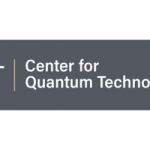Russell & Savoie: Zapata Computing’s Formula for Achieving Quantum Advantage Today

(HPCWire) Always excellent John Russell of HPCWire provides an extensive look at Zapata Computing’s formula for providing quantum advantage today. Russell explains Zapata’s idea is to take the existing compute infrastructure necessary for large-scale enterprise applications and blend in a small amount of quantum enhancement to make those systems run better, better enough, in fact, to make the switch to quantum worthwhile for many applications. Inside Quantum Technology Daily News provides a summary here but recommends a read of the original, lengthy discussion and interview with Zapata’s CEO Christopher Savoie.
Russell explains what he terms “Zapata’s interesting strategy” that currently hinges largely on quantum computers’ ability to generate true random numbers, such as was done in Google’s experiment to prove quantum supremacy. In Zapata’s case the quantum output serves as input for existing ML/DL algorithms run on classical computers. The company is one of many emerging quantum software companies.
Zapata’s core product is Orquestra a software platform described as being able to “compose quantum-enabled workflows and execute freely across the full range of quantum devices.” In Zapata’s hybrid quantum-classical model, HPC and classical computing play prominent roles, as does relying on heuristic methods rather than exact calculation. Put another way, machine learning and existing solvers do the heavy lifting but are guided by quantum input.
During his interview, Savoie explains, ““So, what we’ve done is we’ve taken a quantum-enhanced neural network approach to basically put our quantum spy on that solver. We’re feeding into a classical neural network workflow that already exists and is already in production in a lot of places. The great thing is their cost function, their model, already exists too; we just put a little quantum spy on it. We think it’s pretty clever, and it’s patented, and very disruptive. We’re able to basically model the distribution of the good answers for any software”.
Savoie said there are many reasons for leveraging existing technology. Most have to do with data management (movement, cleansing, etc.) and the needs of large scale of enterprise computing. These applications tend to use lots of data and much of it confidential or regulated and sometimes in many different locations. He points to companies including Palantir and C3 as disrupters in enterprise and hybrid cloud software and likens Zapata to them but with a quantum twist.
The interview closes with an image and reference to Zapata’s work with BBVA. “We’re on this continuum towards fault tolerance. In fact, the work that we’re doing in VQE, for example, and some of the work that we did with BBVA (figure at end of article) is moving the bar to the point where we can actually get some useful heuristic methods that will work in a fault tolerant world, and also work in an interim regime where we have better error-mitigation as opposed to error correction,” he said. “So the new VQE that is 1,000 times better – that is actually moving us into a regime where we don’t exactly need fault tolerance.”



















